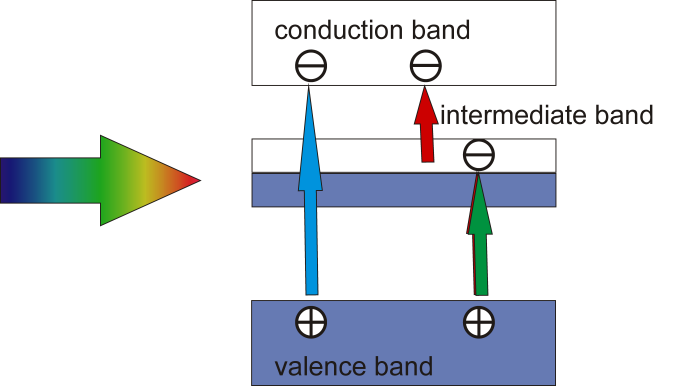Department Structure and Dynamics of Energy Materials
Structure-function relationships in chalcopyrite based solar absorber materials for energy conversion
Structure and Dynamics of Energy Materials: next-generation solar cells
The working Group Structure and Dynamics of Energy Materials participates in the Helmholtz Research Program Renewable Energies in the topic solar cells of the next generation. The focus is on investigations of structure-function relationships in chalcopyrite based intermediate band solar absorber materials.
A possibility to increase the balance limit of a thin film solar cell is the concept of the intermediate band (IB) material, which has been proposed as an absorber material for third generation solar cells.
In an intermediate band gap solar cell, below band gap energy photons are absorbed through transitions from the valence band to the IB and from the IB to the conduction band (Figure 1). The research activities aim to conduct systematic studies on transition metal substituted copper chalcopyrite type semiconductors. These compounds have been proposed as intermediate band solar absorber materials for third generation solar cells.
To proof the general concept of chalcopyrite based intermediate band solar absorber materials the Department of Crystallography contributes in the following points:
- synthesis and of reference materials at close to equilibrium conditions by solid state reaction of the pure elements to rule out solubility limits of transition metal elements like Ti, Mn and Cr in CuGaX2 (X = S, Se)
- chemical and microstructural analysis of the synthesized material by electron microprobe analysis
- structural analysis by X-ray diffraction and X-ray absorption spectroscopy (XAS)


